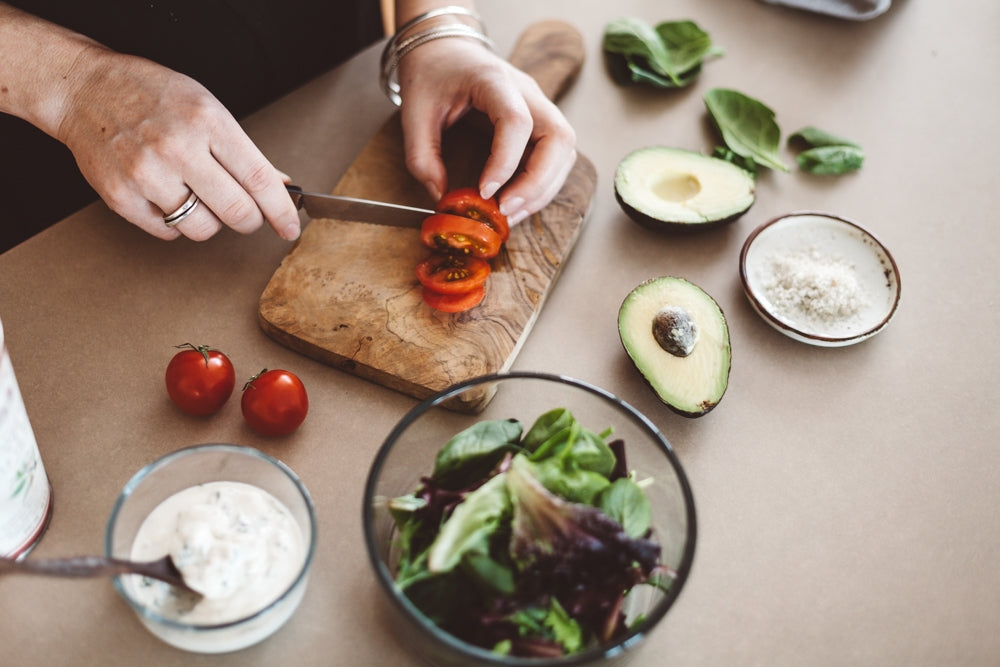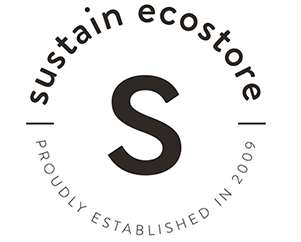How to Achieve Zero-Waste in the Kitchen

SOBERINGLY, THE PRESENT REALITY IN THE WORLD is that plastics are all around us—they are the pillar of modern-day convenience, and our dependence (and acceptance) of them is spelling disaster for the Earth. Our schedules have become so packed that we feel we lack the time to seek out alternatives, or the willpower to resist prepackaged, single-use convenience items. And yet we at Sustain feel hopeful, as awareness leads to action, which leads to change—and we are pleased to be offering a growing number of amazing alternatives!
Arguably, kitchen's are the most wasteful part of the home and with a little know-how and commitment you can easily begin to curb and eventually eliminate this waste. Honestly (and we speak from experience), beginning to make the switch is the toughest part and as you build momentum it becomes addicting, each small victory adding to the thrill (and the occasional guilt-trip when you slip, but hey, it's all part of the process). Here are some basic concepts of going zero-waste in the kitchen (adopting these practices has meant that our family produces nearly no actual 'garbage' as a result of kitchen waste).
REFUSE—The first and most powerful step is to take a look at the cupboards or the grocery cart and eliminate any items that are unnecessarily over-packaged or are developed for single use. Bottled water and coffee pods are the most blatant examples. Search for alternatives such as filtering your water and a good, durable reusable water bottle, and go zero-waste with your coffee with a coffee press or a Chemex with a reusable coffee sock filter. I would argue it takes less time than a drip coffee maker. Swap one thing out at a time so that the process feels manageable and you aren't trying to break many habits at one time—it increases the chances of lasting change and success.
ASSEMBLE A ZERO-WASTE SHOPPING KIT AND BUY FOOD IN BULK—A good zero-waste shopping kit is a must-have, in our opinion. The basic items include:
- A collection of large reusable bags for groceries
- Reusable produce bags
- Cloth bulk bags
- One or two glass jars (for liquid or wet products)
- Zippered Dry Bulk Bags (for items like sugar, flour, spices, salt, rice, etc.)
Keep everything gathered together and ready to go so that it is remembered as you leave the house. Our process is to stuff all the bags into one immediately after unpacking, then hanging the bags on the front door handle so that you grab it the next time you leave the house. Store it in your car until you need it!
PLASTIC WRAP—There is no more satisfying product to quit using than plastic wrap. And yet, somehow, it still finds a place in almost every kitchen. Consider instead using beeswax wrap, which is quite literally natural cloth embedded with beeswax. Warm the wrap with your hands and it will stick to itself, then hardens in the fridge, sealing in freshness. The wrap breathes so that gasses which over-ripen fruit/vegetables and excess moisture is released, keeping things fresher and edible for longer. The wrap is totally reusable for at least a year, then 100% biodegradable after use. To make the most of your wrap be sure to only wash when necessary using COLD water and a small amount of gentle soap on when needed. We've added to our collection—try beeswax wrap bags as well!
KITCHEN TOOLS—from dishcloths to spatulas to brushes, there are a lot of tools in action in the kitchen. While wooden spoons are a classic must-have, consider replacing other items with products that biodegrade/compost as well, especially those that are in high rotation. Replace dishcloths with reusable plant-cellulose versions that you can compost and replace dish brushes and other kitchen brushes with wooden versions like these (shown below). Redecker, a German family-owned brush manufacturer that makes everything by hand, makes brushes of every kind that are fully compostable (any metal pieces can be removed for recycling)—their dish brush features replaceable heads and the metal parts are removable for recycling.
GLASS JARS / STAINLESS STEEL CONTAINERS—are your friend like never before. Mason jars are inexpensive, abundantly available and so very versatile. Klip-top Kilner jars are also beautiful and durable. You can use them to purchase and store bulk items (stay tuned for our zero-waste shopping guide coming soon) or leftovers, or trick them out for use on the go. You can buy lid adaptors to turn mason jars into drinking cups, smoothie jars or for easy pouring, and there are entire cookbooks out there on how to layer food/salads in them so they don't go soggy for lunch, or purchase a jar with a metal insert to keep wet seperate from dry.
Stainless steel containers remain among our most used items in the kitchen—durable and totally recyclable, they range in use from storing left-overs or batch-cooking, to packing lunches (check out the 2- and 3-layer Tiffin containers, divided containers from Lunchbots, the Onyx layered sandwich box as well as our selection of Dalcini nesting containers) and snacks. Some are leak-proof as well, and there is no chance of BPA or other toxic materials coming in contact with your food. You should expect a small investment to get started, but rest assured that they will remain in heavy use for years upon years—a true must-have in any waste-free kitchen. Keep a wax pencil on hand to mark what's inside and the date it was put in the fridge to keep things organized.
MAKE YOUR OWN—cleaners are another area that can easily be cleaned up (pardon the pun). You can make your own easily with basic ingredients like vinegar, baking soda, water, and some lemon or thyme essential oil (these handy bottles make like really easy). If you are less inclined to get experimental and want something easy, tried, tested, and true, we offer 25+ plus products in bulk—bring in a mason jar, a recycled bottle, whatever you've got, and we'll fill it to save the plastic packaging.
Another area that we have quite honestly found crucial to reducing plastic and packaging waste in the kitchen is to make food from scratch. Pre-packaged snacks and staples, even if organic, can contain preservatives and oils that are not ideal for your health, and packaging is nearly impossible to avoid. The answer is to get curious in the kitchen and figure out how to make it yourself. For us it has led to increased connection with our food, pride in what we eat and that we made it from scratch, confidence in the kitchen, and so much more! Our suggestion? Figure out what things you buy every week that might be possible to make at home and start there (maybe just don't dive right into the tougher things like bread or crackers!). Find our recipe for hummus and plant-based milk here! A quick internet or Pinterest search will likely yield lots of recipes (and we will share some of our faves soon!), but here are a few blog resources that we consult regularly, all with a whole food focus, most with a vegetarian approach:
Pick Up Limes | Minimalist Baker | Love and Lemons | Yum Universe | Dishing Up The Dirt | Half Baked Harvest
RECYCLE—This seems like such a no-brainer but without intimately knowing what and how your district recycles it can be really easy to make mistakes that reduce the chance of your blue bin contents actually being recycled. Find out exactly what can and cannot be recycled (and buy accordingly), and also make sure you know how to process your recycling. For example, food contamination often causes recycling to be diverted to the landfill. Recycling, while a necessity, is still a last resort because it's not a perfect system and the goal is to reduce our dependence on plastic. Our suggestion is to do a plastic recycling audit:
Keep a running tally of everything you put into your bin in a week. At the end of the week you will know what you consume the most of and will have a targeted approach to eliminate or find alternatives for those things. It's a really helpful tool that will also shed light on your consumption habits! We go through this exercise every few months or so.
COMPOST—Between recycling and composting you will be able to produce almost zero landfill waste in your kitchen, something that is desperately needed as all over Ontario landfills are running out of space. 12 million tonnes of organic waste a year is sent to landfill — more than 850 kilograms per person — and only a quarter of that is diverted via composting. The problem is compounded by the anaerobic environment in landfill which means that even organic waste doesn't break down very well, and what does releases methane which is contributing to climate change.
If you don't have municipal organic waste pickup, managing a compost heap is easy to do if you have the space and a little time. You can get fancy if you're super committed (such as practicing vermiculture indoors), or you might be able to find a depot that accepts compost (often at the local farmers' market). If this option works for you, store your compostable compost bag in the freezer—this prevents any messy oozing and odor, and makes transporting your compost to the depot really easy. Some cities have even developed amazing businesses that collect compost and turn it into soil (black gold) for sale—an example is The Compost Club in Chicago. I suppose my point here is do a little research and find a way, there is always a way!
SHOP THE ENTIRE ZERO-WASTE KITCHEN COLLECTION



